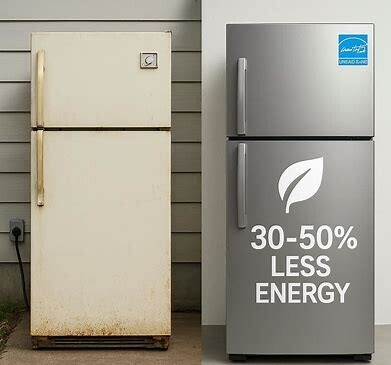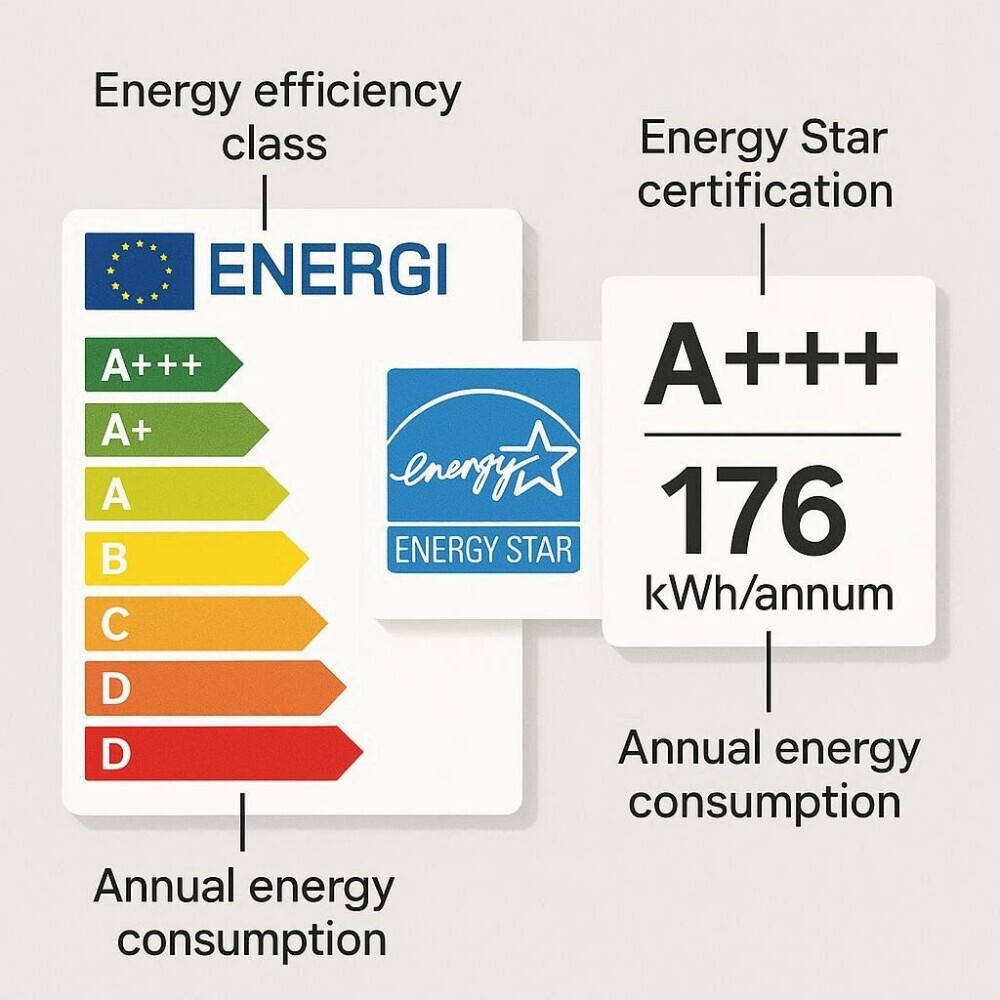
Energy-efficient appliances are big players in the world of sustainability. When an appliance is energy-efficient, it uses less electricity compared to its standard counterpart, which makes it not just friendly to the planet, but also easy on your wallet. Manufacturers use cutting-edge technologies to make sure these appliances do the job without guzzling power.
Understanding energy-efficient standards and ratings is like getting a cheat sheet for being eco-friendly. Appliances are ranked with different labels like ENERGY STAR, which help shoppers spot products that save energy. These labels aren’t just for show – they mean real savings on your energy bill.
Why should anyone care about energy-efficient appliances? Well, besides the obvious savings, there’s a bigger picture here. These appliances play a crucial role in reducing overall energy consumption, which is a win for everyone, especially the environment. Committing to energy-efficient choices means contributing to a sustainable future without sacrificing comfort or convenience.
Top-Rated Energy-Efficient Appliances: A Consumer’s Choice

When looking at consumer reviews for the best energy-efficient appliances, several standouts shine through across different categories. Users prioritize appliances that minimize energy use without compromising performance. But what champions emerge from these reviews?
Refrigerators and washing machines often come out on top in efficiency ratings. Modern fridges, for instance, seem to have cracked the code on cutting power while keeping our food fresh and cool. Brands that integrate smart technology and effective insulation receive high praise.
Washing machines also earn their stripes for eco-friendliness. High-efficiency models that use less water and adapt their washing cycles based on load size lead the pack. Pretty smart, right? They save resources without skimping on cleaning power.
When you hear about the most energy-efficient appliance, LED light bulbs are quite the stars. They might not be as flashy as a smart fridge, but they reduce energy usage significantly and last longer than their incandescent relatives.
User testimonials make a huge impact, sharing direct stories of lowered utility bills and a green conscience. These first-hand experiences are informative and inspiring, steering others toward smarter choices. Efficient dishwashers, microwaves, and smart thermostats also receive nods for enhancing energy savings.
The real takeaway here? Consumers are delighted with the performance and savings of their top picks, and the key factors often hinge on long-term performance, cost-effectiveness, and eco-benefits. If you’re in the market to upgrade or switch things up, going for energy-efficient options seems to be the way to go.
Avoiding Energy Wasters: Knowing What to Look Out For

Not all appliances wear a green badge of honour. Some are notorious energy hogs lurking right in our homes, and figuring them out can be like turning on a light in a dark room. Knowing what to avoid or replace can save you from surprise spikes in your energy bill.
Older refrigerators are often the culprits of energy wastage. They guzzle power without mercy, especially models that lack modern efficiency standards. What’s the fix? Consider upgrading to a newer, more efficient model.
Another sneaky energy thief is the old-school water heater. Traditional models heat water continuously, whether you need it or not. Switching to a tankless water heater can reduce waste and provide hot water on demand, a sweet win-win.
Space heaters and air conditioners also rank high on the energy-wasting list. Their constant on-and-off cycles can send your power meter spinning. Opting for energy-efficient models, and using them strategically during peak times, can ease their demand.
Standby power, known as the ‘phantom load’, is where appliances like TVs and chargers suck energy even when turned off. Unplugging devices when not in use or using smart power strips can help curb this invisible drain. The takeaway here is clear – identifying and addressing these energy hogs can lead to considerable savings and promote a more efficient home.
So, don’t get caught off guard. By being aware and updating where necessary, there’s plenty of potential for big savings and a lower carbon footprint.
Making Smart Purchases: Understanding Energy Ratings and Efficiency Standards

When it comes to buying appliances, energy ratings are like a treasure map guiding you to savings and efficiency. These ratings, especially those that hit ENERGY STAR status, highlight products that go the extra mile in cutting down energy consumption. But what exactly makes these ratings so important?
Energy ratings give consumers a clear idea of how efficiently an appliance uses power. The best rating is typically an ‘A+++’, a gold star indicating top-tier energy efficiency. But don’t be fooled by letters alone—reading the fine print for specific energy consumption per year can reveal even more about what your appliance is truly capable of.
Now, what’s the major energy user in your home? Many folks are surprised to find that heating and cooling systems often take the top spot. These bad boys can heavily influence your overall energy bill, making it crucial to choose models with strong efficiency ratings. Investing in a high-efficiency HVAC system can drastically cut down on these costs.
How can you mitigate these expenses? Look for appliances that have both high ratings and smart features, like programmable settings that optimize energy use based on your schedule. Smart thermostats, for instance, can learn your habits and adjust accordingly, providing comfort without wastage.
Choosing appliances wisely means not just looking at the price tag, but also the long-term savings and environmental impact. By keeping an eye on energy ratings and understanding efficiency standards, you can make informed decisions that benefit your home and the planet.
